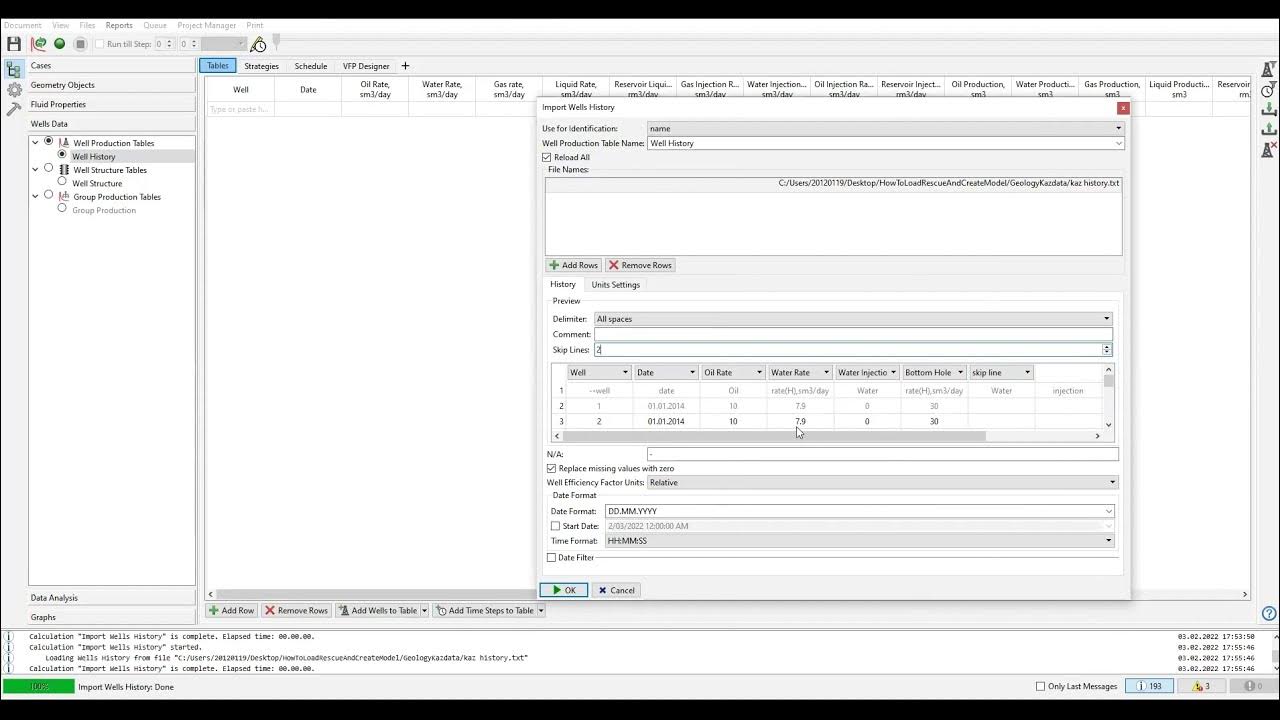Drill stem testing
Summary
TLDRThe video explains the process of conducting a drill stem test (DST), a crucial method for evaluating the productivity of oil and gas wells. It details how the DST tool, lowered into the well, allows formation fluids to flow to the surface while recording essential data such as formation pressure and temperature. The video also highlights the components of the DST tool, the method for maintaining well pressure, and the subsequent analysis of the collected data to determine well viability and efficiency. Overall, the DST is presented as a vital step in optimizing hydrocarbon production.
Takeaways
- 🛠️ A drill stem test (DST) is used to temporarily produce hydrocarbons and gather essential data about the well's formation.
- 📊 DST measures formation pressure and temperature to assess permeability and hydrocarbon composition.
- 🔧 The DST tool is assembled on the drill string and is used to evaluate specific test zones during the drilling process.
- 💧 Formation fluids can flow to the surface or into a sample chamber for analysis during the DST.
- 🔒 The expanded packer seals the well section being tested, ensuring accurate pressure measurements.
- 🌊 A water cushion is used to support the drill pipe and prevent pressure surges that could damage the formation or equipment.
- ⏳ The well can flow for a short time to clear drilling fluid before being shut in to allow pressure to build.
- 📈 Pressure buildup data from the DST provides insights into the formation's permeability and size.
- 🚧 Reverse circulation is employed to remove formation fluids from the drill stem and restore drilling fluid to maintain formation pressure.
- 🔄 The driller can separate the DST tool at the safety joint if necessary, allowing for data retrieval and tool removal.
Q & A
What is the purpose of a drill stem test (DST)?
-A drill stem test (DST) is used to temporarily produce hydrocarbons and measure formation pressure and temperature data to assess formation permeability and hydrocarbon composition.
How does a DST tool operate within the drilling process?
-The DST tool is run on the drill string and allows formation fluids to flow to the surface or into a sample chamber, enabling evaluation of the well's producing characteristics.
What components are included in a drill stem test tool assembly?
-The DST tool assembly includes a reverse circulation sub, shut-off valve, hydraulic recorder, hydraulic jar, safety joint, packer, perforated pipe, and anchor shoe.
What is the significance of sealing the hole beneath the packer during a DST?
-Sealing the hole beneath the packer allows for accurate testing of formation fluids without interference from other sections of the well, ensuring reliable data collection.
What role does the water cushion play during the DST?
-The water cushion supports the drill pipe against mud pressure and maintains hydrostatic pressure on the formation, helping to prevent surging of formation fluids.
Why is it important to monitor annulus pressure during a DST?
-Monitoring annulus pressure ensures that the packer maintains a good seal between the tested section and the annulus, preventing contamination and ensuring accurate test results.
What happens after the DST tool is lowered to the desired depth?
-After lowering the DST tool, the well is circulated and conditioned with drilling fluid before the tool is activated to allow formation fluids to flow into the tool.
What data is collected during a drill stem test?
-During a DST, data such as production potential, fluid properties, and pressure buildup rates are collected to analyze the formation's permeability and size.
How is the DST tool removed from the hole after testing?
-The DST tool is removed by first opening the reverse circulation sub, which allows drilling fluid to circulate and kill the well, controlling formation pressure before pulling the tool.
What action is taken if the packer cannot be freed during the removal of the DST tool?
-If the packer cannot be freed, the driller can separate the tool at the safety joint to remove the tool above the packer, including the recorder with its data.
Outlines

هذا القسم متوفر فقط للمشتركين. يرجى الترقية للوصول إلى هذه الميزة.
قم بالترقية الآنMindmap

هذا القسم متوفر فقط للمشتركين. يرجى الترقية للوصول إلى هذه الميزة.
قم بالترقية الآنKeywords

هذا القسم متوفر فقط للمشتركين. يرجى الترقية للوصول إلى هذه الميزة.
قم بالترقية الآنHighlights

هذا القسم متوفر فقط للمشتركين. يرجى الترقية للوصول إلى هذه الميزة.
قم بالترقية الآنTranscripts

هذا القسم متوفر فقط للمشتركين. يرجى الترقية للوصول إلى هذه الميزة.
قم بالترقية الآنتصفح المزيد من مقاطع الفيديو ذات الصلة
5.0 / 5 (0 votes)






